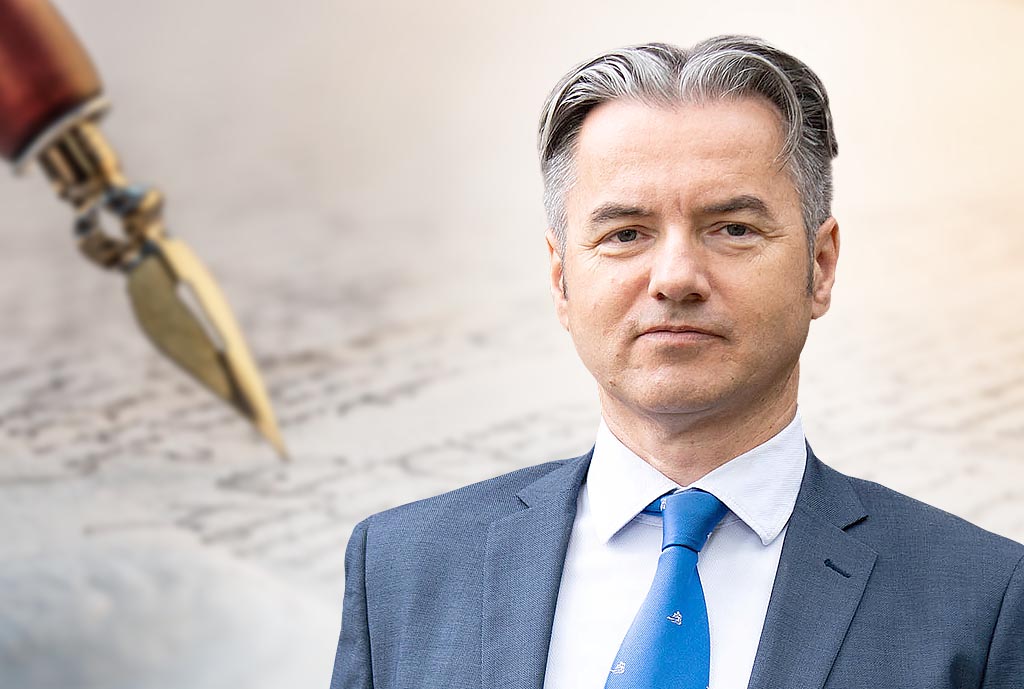By: Dr Metod Berlec
On the night of April 18th, 1937, the Communist Party of Slovenia was founded in Čebine nad Zagorjem under the leadership of Edvard Kardelj as an integral part of the Communist Party of Yugoslavia. It was an illegal political organisation that was banned during the Kingdom of Serbs, Croats, and Slovenes, i.e., the Kingdom of Yugoslavia, because it carried out terrorist acts. It proved its criminality during the Second World War, i.e., during the occupation, by carrying out the bloody communist revolution, which claimed the lives of tens of thousands of Slovenians and more than seven hundred post-war cemeteries or murder sites.
Last week, Culture Minister Asta Vrečko, who is a typical representative of caviar leftists, paid tribute to this criminal organisation. Her mouth is full of social justice, but in practice she enjoys all the advantages of the free market system, and she particularly likes expensive trips around the world (and luxurious hotels) at the expense of Slovenian taxpayers. Of course, at the Ministry of Culture, the political commissar is concerned that the Ministry’s money goes to “real cultural figures” and “real media”, which are on the “Party line”, on the line of the ruling transitional left.
A year after the National Assembly elections, which were held on April 24th, 2022, the situation on the Slovenian political scene is quite turbulent, but still such that we cannot expect any major political upheavals in the short term. The ruling left coalition replaces its inability, incompetence, or practical incapacity for any serious reforms and lack of a substantive vision for the development of Slovenia by reviving the Party’s revolutionary traditions and nullifying the importance of Slovenian democratisation and independence. The ideological tone of Golob’s government is set by the extremist Levica party, whose core is politicians who, due to their youth, mostly did not experience or feel the misery of socialist Yugoslavia in practice, but during the transition they went through the Slovenian school education system (mainly through the Faculty of Social Sciences in Ljubljana and Faculty of Arts in Ljubljana) well-versed in the ideas of cultural Marxism and all its delusions. The SD party is largely in their shadow, since its president, Tanja Fajon, as Foreign Minister, is capable of nothing more than political sweet talk and empty clichés. However, it seems to the party that there are considerable differences between the headquarters and its municipal committees, which was shown both by the opposition of its mayors to changes to the law on foreigners and to some government announcements of reorganisation or even the abolition of certain powers of smaller administrative units. The chapter for itself is the Gibanje Svoboda party, which was created on the basis of opposition to the previous Janša’s government and the bombastic promises of Robert Golob, who, as a former manager, completely disappointed in less than a year. He still did not get over the fact that the Gen-I supervisory board did not extend his mandate at the top of this monopoly state-owned company during the previous government. That is why he appointed Dnevnik’s long-time journalist Vesna Vuković to the post of general secretary of his party, who in the past specialised in “media murders” of those who found themselves in the disfavour of the transitional left, and if necessary, as well as those who found themselves on the opposite banks within the Party factional struggles. Vuković now plays a similar role as Gregor Golobič during the time of Drnovšek’s LDS; that is to say, he recruits in state and parastatal companies, while at the same time protects state bodies for a political showdown with the opposition and also with the media you are reading. Within the Gibanje Svoboda party, there is a lot of dissatisfaction with Golob’s incompetent and confused leadership of the government, but for now there is an assessment among experts that in the short term there will not be any major changes within the party or the breakup of the parliamentary group. Serious upheavals are expected to begin only in the fall or next year, when Golob’s replacement may also happen. Of course, this also depends on the intensity of the anti-government protests.
And what about the opposition? There are only two political parties in it in the current convocation of the parliament – SDS and NSi. For the latter, it is obvious that it functions as a sub-coalition party, as it regularly coordinates with the Gibanje Svoboda party, including with individual ministers. The party is increasingly in the grip of the networks, which have an interest in collaborating with the ruling coalition. The NSi parliamentary group itself is divided, as half of its MPs would immediately and officially “jump” into the ruling left coalition, while the other part would not. In doing so, the party is using a double game to waste the capital it has created by operating in the third Janša’s government. It is different with SDS, which once again appears as the only serious alternative to the ruling left coalition…

